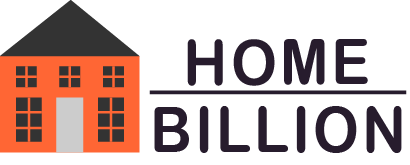I Make $70,000 a Year How Much House Can i Afford When determining how much house you can afford with a $70,000 annual income, there are a few key considerations, such as monthly gross income, typical mortgage affordability ratios, and anticipated costs like property taxes, homeowners insurance, and possible private mortgage insurance (PMI). Here’s a detailed analysis and breakdown.
Key Financial Assumptions
| Step | Calculation | Explanation |
|---|---|---|
| 1. Monthly Gross Income | $70,000 ÷ 12 = $5,833 | Dividing annual income by 12 months to find monthly income. |
| 2. Affordable Monthly Payment (28%) | $5,833 x 0.28 = $1,633 | 28% of monthly income goes to housing costs, as recommended by lenders. |
| 3. Loan Payment (P&I) | Approx. $1,100 – $1,200 | Estimated principal & interest portion for a $250,000 – $275,000 mortgage at 6%. |
| 4. Property Taxes | ~1.25% annually of home price | Estimated based on average U.S. rates, could vary by location. |
| 5. Homeowner’s Insurance | ~0.5% annually of home price | Estimated based on typical home insurance costs. |
Step-by-Step Calculation and Detailed Execution
Based on the above assumptions, the following table illustrates affordability for different down payment scenarios.
Affordability Calculations for Different Home Prices
Below is a breakdown based on these factors, calculating monthly payments and affordability.
| Home Price | Down Payment (20%) | Loan Amount | Estimated Monthly Payment (P&I) | Property Taxes (Monthly) | Homeowner’s Insurance (Monthly) | Total Estimated Payment | Can You Afford? |
|---|---|---|---|---|---|---|---|
| $275,000 | $55,000 | $220,000 | $1,319 | $286 | $115 | $1,720 | Close |
| $300,000 | $60,000 | $240,000 | $1,439 | $312 | $125 | $1,876 | Likely Over Budget |
Explanation of the Table
- Home Price: This is the total cost of the property. Each row represents different price points.
- Down Payment: Calculated as 20% of the home price. If the down payment is less than 20%, PMI will typically be required, adding an additional cost.
- Loan Amount: The home price minus the down payment, representing the mortgage amount to be financed.
- Estimated Monthly Payment (P&I): This is the principal and interest portion of the monthly payment, calculated at a 6% interest rate over 30 years. It doesn’t include taxes or insurance.
- Property Taxes (Monthly): Estimated based on the home price, assuming an average annual rate of 1.25%. This is divided by 12 to find the monthly cost.
- Homeowner’s Insurance (Monthly): Estimated as 0.5% of the home price annually, divided by 12.
- Total Estimated Payment: The sum of the mortgage (P&I), property taxes, and homeowner’s insurance, representing your total monthly housing expense.
- Can You Afford?: Based on the monthly budget of $1,633, indicating whether each home price is affordable.
Additional Considerations
- Private Mortgage Insurance (PMI): If you’re putting less than 20% down, PMI will likely apply, which could add $50-$150 or more per month to your payment. This should be factored in if your down payment is lower.
- Maintenance and Utilities: Budgeting for home maintenance (around 1% of the home price annually) and utilities is essential, as these can add to your monthly expenses.
- Other Debts: Your ability to afford a house may be influenced by other debt obligations, such as student loans, car payments, or credit card debt. Lenders often look at a debt-to-income (DTI) ratio, ideally 36% or lower, including housing costs.
Summary
Based on a $70,000 annual income and typical affordability guidelines, you could afford a home priced around $250,000 to $275,000 if you make a 20% down payment. A home at the upper end of this range ($300,000) may stretch your budget, especially considering additional costs. It’s wise to keep housing costs within your comfort zone and budget for other financial goals.
Consulting a mortgage lender or financial advisor will help you get tailored insights, especially if you anticipate changes in income or expenses. They can also help with pre-approval to give you an accurate idea of what you might be able to borrow and afford comfortably.

